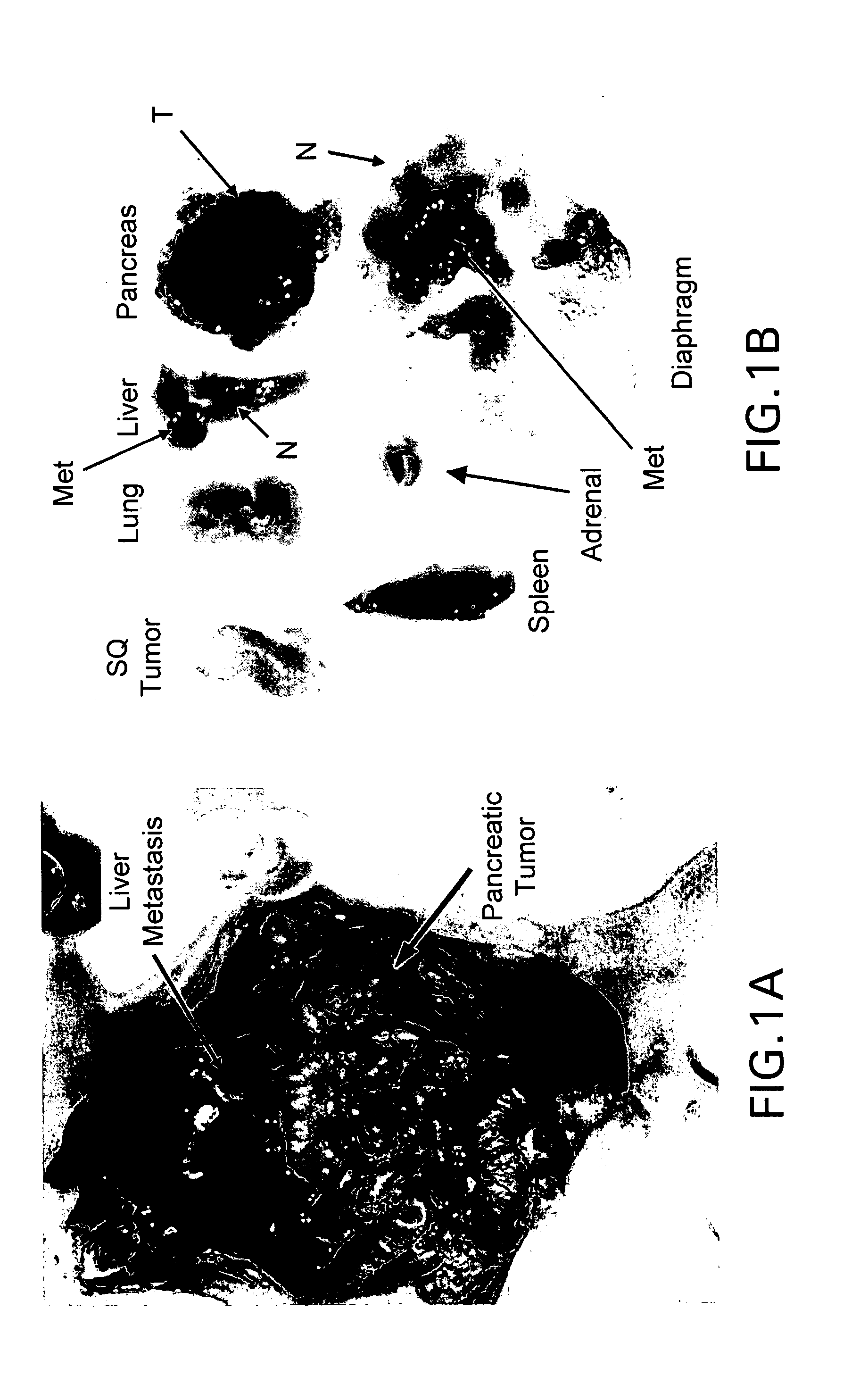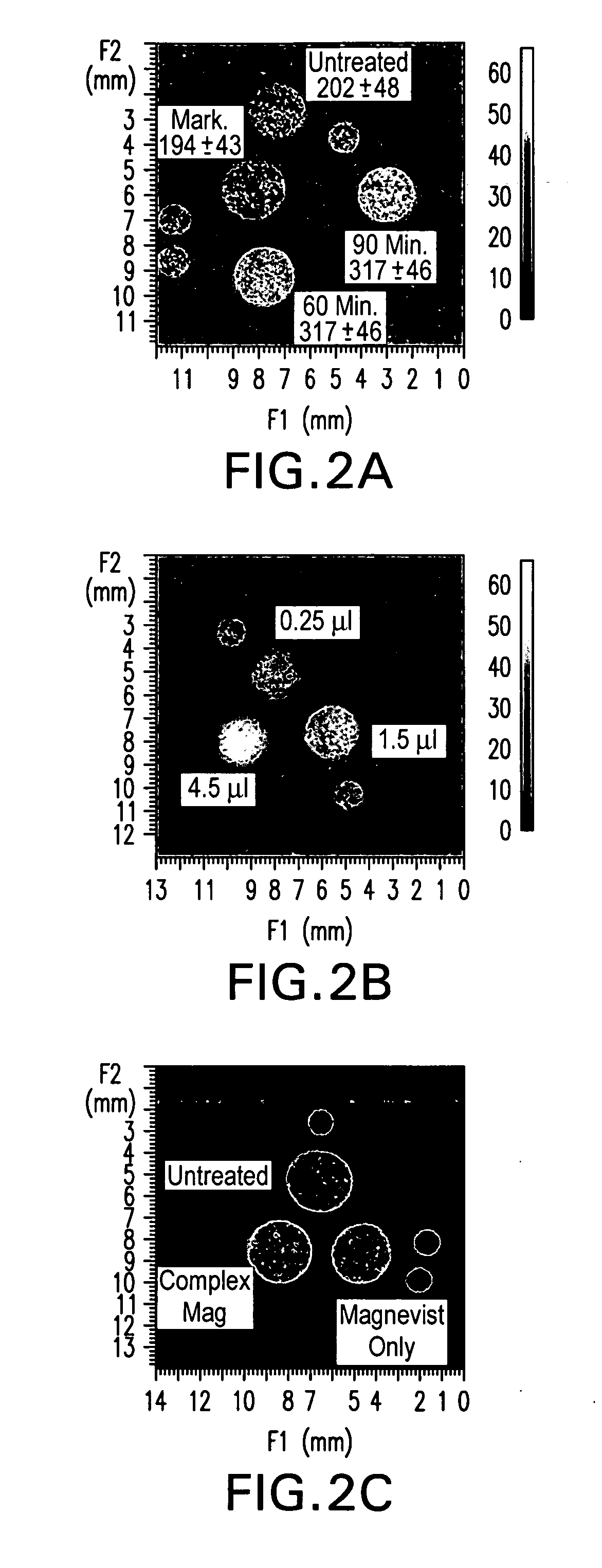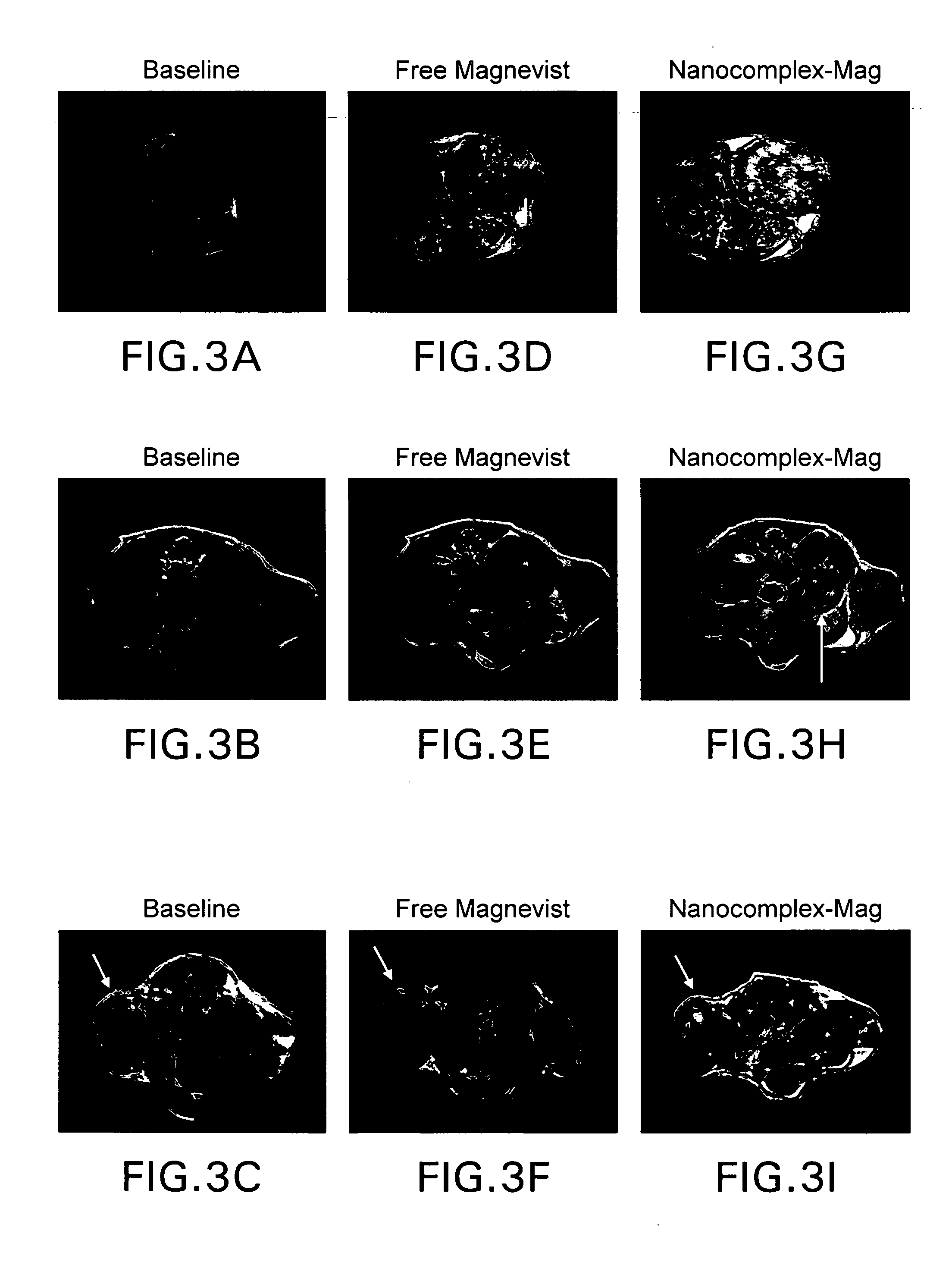Tumor-Targeted nanodelivery systems to improve early MRI detection of cancer
- Summary
- Abstract
- Description
- Claims
- Application Information
AI Technical Summary
Benefits of technology
Problems solved by technology
Method used
Image
Examples
example 1
Immunoliposome Complexes Comprising Magnevist®
Materials and Methods
[0074] Cell lines
[0075] Human lymphoblastic leukemia cell line K562 was obtained from the Lombardi Comprehensive Cancer Center Tissue Culture core facility. These suspension cells were maintained in RPMI1640 supplemented with 10% Heat Inactivated FBS plus 2 mM L-Glutamine, and 50 μg / ml each of penicillin, streptomycion and neomycin. Human pancreatic cancer cell line CaPan-1 (obtained from ATCC Manassas, Va.) was derived from a metastatic adenocarcinoma of the pancreas. It was maintained in Iscov's Modified Dulbecco's Medium containing 4 mM L-Glutamine and Sodium Bicarbonate, supplemental with 20% non-Heat Inactivated FBS, 2 mM L-Glutamine and 50 μg / mL each of penicillin, streptomycin and neomycin. Human prostate cancer cell line DU145 (ATCC, Manassas, Va.) was originally derived from a lesion in the brain of a patient with widespread metastatic carcinoma of the prostate. It was maintained in Minimum Essential Medi...
example 2
Comparison of Imaging in Different Cell Lines
[0118]FIGS. 8A-8H show improved MR imaging in two different models of cancer using the Ligand-HK-Liposome-Mag nanocomplex. Nanocomplexes for use in this Example were prepared using the same ratios and procedures as set forth in Example 1. Human breast cancer MDA-MB-435 (FIG. 8E-8H) or human prostate cancer cell line (DU145) (FIG. 8A-8D) cells were subcutaneously injected on the lower back, of female athymic nude mice. Free Magnevist®, or the TfRscFv-liposome nanocomplex (scLip-Mag), or the TfRscFv-HK-liposome nanocomplex (scLip-HK-Mag) comprising the HoKc peptide, containing the same dose of Magnevist® were i.v. injected (via the tail vein) into each of the three mice on three consecutive days. This amount of Magnevist® is equivalent to twice the dose that would be administered to a human patient. The total volume of solution administered in all cases was 400 μl. A baseline scan was performed just prior to administration of both nanocom...
example 3
Comparison of Dynamic MRI Scans of Subcutaneous PANC-1 Tumors after Systemic Injection of Free (Uncomplexed) or TJRScFv-Lip-Magnevist
[0120] The following experiments were performed to compare the rate and level of uptake and washout between free (uncomplexed) and TfRscFv-Lip-Mag in tumors after systemic delivery. Subcutaneous xenograft tumors of PANC-1 were induced in female athymic nude mice by injection of 1 to 2×107 PANC-1 cells suspended in Matrigel TM collagen basement membrane matrix (BD Biosciences). Approximately 2.5-3 weeks later, the animals were used for imaging. Cationic liposome (DOTAP:DOPE) was prepared by the ethanol injection method as previously described (see U.S. Published Patent Application No. 2003 / 0044407; Xu L, et al., Molecular Cancer Therapeutics 1:337-346 (2002) the disclosures of each of which are incorporated herein by reference). The targeting moiety used in these studies is the anti-transferrin receptor single chain antibody fragment (TfRscFv).
[0121]...
PUM
| Property | Measurement | Unit |
|---|---|---|
| Time | aaaaa | aaaaa |
| Time | aaaaa | aaaaa |
| Mass | aaaaa | aaaaa |
Abstract
Description
Claims
Application Information
 Login to View More
Login to View More - R&D
- Intellectual Property
- Life Sciences
- Materials
- Tech Scout
- Unparalleled Data Quality
- Higher Quality Content
- 60% Fewer Hallucinations
Browse by: Latest US Patents, China's latest patents, Technical Efficacy Thesaurus, Application Domain, Technology Topic, Popular Technical Reports.
© 2025 PatSnap. All rights reserved.Legal|Privacy policy|Modern Slavery Act Transparency Statement|Sitemap|About US| Contact US: help@patsnap.com



